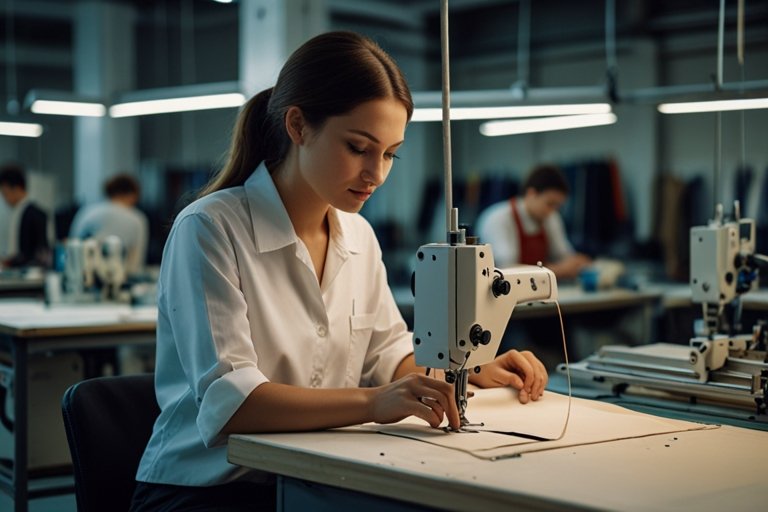
The fashion industry relies heavily on cut-and-sew manufacturing because it provides unmatched flexibility and control over the production process. Brands can turn plain materials into distinctive, premium clothing made to their exact requirements thanks to this specialist technique. This thorough manual will explore cut and sew production in great detail. We’ll cover all the essentials, from choosing the best cut-and-sew manufacturer partner strategically to the fundamentals of converting a design concept into a working product.
The Step-by-Step Cut and Sew Process
As a sweatshirt manufacturer, this comprehensive understanding of the process works with the proper partners. From the original design concept to the finished, ready-to-wear garment, the cut-and-sew procedure is a complex trip. Every stage is crucial and needs to be done carefully to guarantee that the final product satisfies the highest requirements for both design and quality. Here’s an in-depth look at each phase of the procedure:
Creating: From Idea to Pattern
A vision sets the path for the journey. To meet the practical and aesthetic requirements of the brand, designers choose textiles, create sketches, and generate concepts. This phase is essential for establishing the project’s tone and making sure the intended audience will be satisfied with the finished output. Detailed pattern creation follows the completion of the designs. To guarantee accuracy and consistency in the finished result, these patterns—which serve as templates for cutting the fabric—must be painstakingly created.
Cutting: Each Piece of Fabric is Cut Precisely
After obtaining the patterns, the cutting process starts. In this process, the fabric is laid out on cutting tables, and the material is meticulously cut in accordance with the patterns. Here, accuracy is crucial to prevent any inconsistencies that can compromise the garment’s ultimate construction. Automated cutting machines, which can process huge quantities of cloth fast and accurately while minimizing waste, are sometimes used in modern cut-and-sew operations.
Making the Garment through Sewing
The parts go to the sewing step once they are cut. Here, the fabric pieces are sewn together according to the design guidelines. Expert seamstresses put the components together using a variety of stitching tools and techniques, guaranteeing a smooth finish and robust joints. Depending on the design of the garment, this stage might be more or less complicated; more elaborate components require skilled sewing skills.
Final Touches: Detailing and Quality Inspections
Finishing and quality control represent the last stages of the cut-and-sew process. The assembled clothing is examined at this stage to look for flaws or irregularities. All required modifications or fixes are applied. To make sure the clothing is presentation-ready, finishing touches include adding buttons, zippers, and other hardware in addition to one more press and steam.
This detailed explanation demonstrates how meticulous cut-and-sewn production is. Every phase is essential to creating a premium garment that satisfies the designer’s vision and conforms to industry norms. Brands can greatly improve their production skills and provide their customers with superior products by comprehending and improving this procedure.
Selecting Appropriate Cut-and-Sew Manufacturers
Making the right cut-and-sew manufacturer choice is essential to the effective implementation of your ideas and the preservation of your brand. The quality of your products, the effectiveness of your production process, and ultimately your bottom line can all be greatly impacted by this choice.
Selection Criteria for Manufacturers
Here are some essential standards and factors to keep in mind when selecting a cut and sew manufacturer, especially in the thriving USA markets.
Quality Assurance
Evaluate the manufacturer’s dedication to excellence. To determine their ability to provide high-quality items, look for certificates, quality control procedures, and endorsements from prior customers.


